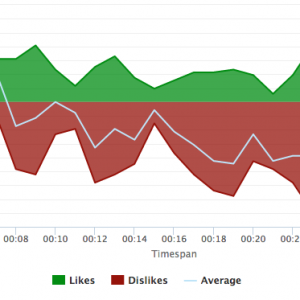Comprehensive Brand Analysis: Understanding Your Competitors’ Strategies

As a business owner, it is crucial to have a deep understanding of your competitors’ strategies. Competition in any industry is fierce, making it crucial for companies to keep a close eye on their rivals to stay ahead of the curve. One way to do this is by conducting a comprehensive brand analysis. By analyzing your competitors’ brands, you can identify key market opportunities, gain a competitive edge, and improve your own brand strategy. In this article, we will explore the importance of analyzing competitor brands and provide practical tips for conducting a thorough brand analysis.
The Importance of Analyzing Competitor Brands
Competitor analysis involves the evaluation of a company’s key rivals in the market. It is a method of researching and identifying the strategies, tactics, and strengths and weaknesses of these rivals. This analysis can be a significant driver of business success, particularly when it comes to brand analysis. Analyzing your competitors’ brands can provide valuable insights into your own branding efforts and help you stay ahead of the curve.
Gaining a Competitive Edge
By analyzing your competitors’ brands, you can identify what sets them apart from your brand. It allows you to evaluate their messaging, mission, values, product offerings, and pricing strategies. Armed with this knowledge, you can identify ways to differentiate your brand and offer something unique to your target audience. You can take an informed approach when developing messaging, visuals, and marketing efforts, all with the aim of positioning your brand ahead of the competition.
For example, if you notice that your competitor’s brand messaging is focused on sustainability, you can take steps to incorporate sustainable practices into your own business operations and messaging. This can help you appeal to customers who prioritize environmentally friendly products and services.
Identifying Market Opportunities
One of the foremost benefits of analyzing your competitors’ brands is that it offers an opportunity to identify gaps in your own product offerings. By looking at your competitors’ product lines, you can identify opportunities for expanding your own. You can also identify underserved markets, resulting in the creation of new products or services that cater to specific audiences. This analysis can lead to increased revenue, market share, and brand visibility.
For instance, if you notice that your competitor is not offering a particular product or service that you are capable of offering, you can capitalize on that gap in the market. This can help you expand your product line and attract new customers who are looking for that particular product or service.
Improving Your Brand Strategy
Analyzing your competitors’ brands can provide vital information on what tactics or strategies are effective. By assessing your competitors’ strengths and weaknesses, you can identify gaps in your own branding strategies. This analysis can help drive essential improvements to your branding efforts, such as refining your messaging, refreshing your logo, and improving your marketing tactics. Furthermore, evaluating your competitors’ branding strategies can be a source of inspiration and innovation for your own brand.
For example, if you notice that your competitor is using social media to engage with their customers effectively, you can take inspiration from their strategy and improve your own social media marketing efforts. You can also identify areas where your competitor’s branding strategy is lacking and use that information to differentiate your brand from theirs.
Overall, analyzing your competitors’ brands is an essential component of any successful branding strategy. It can help you gain a competitive edge, identify market opportunities, and improve your branding efforts. By staying informed about your competitors’ strategies, you can position your brand for success in a crowded marketplace.
Identifying Your Key Competitors
The first step in analyzing your competitors’ brands is identifying who they are. Conduct market research to identify your closest competitors, focusing on those with a similar target audience, product offering, and marketing strategy. In assessing competitors, consider the size of their market share, their reputation in the industry, and their level of brand awareness. Once you have identified your key competitors, the next step is to assess their brands.
It is important to note that identifying your competitors is not a one-time event. As the market changes and evolves, new competitors may emerge, and existing competitors may change their strategy or offering. Therefore, it is essential to conduct regular market research to stay up-to-date on your competitors and adjust your brand strategy accordingly.
Analyzing Market Share
When looking at your competitors, evaluating their market share is an excellent place to start. It involves looking at the industry as a whole and assessing the percentage of the market each competitor holds. This information can help you understand the competitive landscape and identify potential areas for growth.
However, market share alone does not tell the whole story. It is also important to consider factors such as profitability, customer loyalty, and brand reputation. A competitor with a smaller market share may be more profitable or have a stronger brand reputation than a competitor with a larger market share.
Recognizing Industry Leaders
Identifying industry leaders is another critical aspect of analyzing your competitors’ brands. These leaders are typically the most prominent and well-known companies in your industry. By examining their branding strategies, you can identify what tactics are most effective and provide inspiration for your brand strategy.
However, it is important not to simply copy the strategies of industry leaders. Your brand should have a unique identity and stand out from the competition. Instead, use the strategies of industry leaders as a starting point and tailor them to fit your brand’s unique characteristics and goals.
Monitoring Emerging Brands
Keeping an eye on emerging brands is crucial in a highly competitive market. It helps identify new players in the industry and potential competitors in the future. Additionally, analyzing emerging brands can help with identifying new trends, products, and services that you can incorporate into your own brand strategy to stay ahead of the competition.
However, it is important not to become too focused on emerging brands at the expense of established competitors. Emerging brands may not have a significant impact on the market for some time, and established competitors may still pose a significant threat to your brand.
In conclusion, identifying and analyzing your competitors’ brands is a crucial step in developing your own brand strategy. By evaluating factors such as market share, industry leaders, and emerging brands, you can gain valuable insights into the competitive landscape and identify opportunities for growth and differentiation.
Conducting a Thorough Competitor Analysis
Conducting a thorough competitor analysis is an essential step in developing a successful marketing strategy. It helps you understand your competitors’ strengths and weaknesses, identify gaps in the market, and develop a unique value proposition that resonates with your target audience.
Assessing Competitors’ Brand Positioning
Brand positioning is a critical factor in the success of any business. By analyzing your competitors’ brand positioning, you can identify what resonates with customers and how they differentiate from one another. It can help you develop your own positioning strategy, keeping in mind that your brand’s unique proposition should be reflected in every aspect of your marketing efforts.
For example, if your competitor’s brand positioning is focused on affordability, you may want to differentiate yourself by emphasizing quality or customer service. Alternatively, if your competitor’s brand positioning is focused on a specific niche, you may want to position your brand as a more general solution that caters to a broader audience.
Evaluating Competitors’ Product Offerings
Evaluating your competitors’ product offerings can help you identify gaps in your own product line or ways you can improve your current offerings. By understanding your competitors’ products, you can develop new products or services that better cater to your target audience, resulting in increased revenue and market share.
For example, if your competitor offers a wider range of products, you may want to consider expanding your product line to include similar offerings. Alternatively, if your competitor’s products are of lower quality, you may want to emphasize the superior quality of your own products in your marketing efforts.
Analyzing Competitors’ Pricing Strategies
Pricing is an essential factor in the purchasing decision of most customers. Analyzing your competitors’ pricing strategies can help you identify how they position themselves in the market and what value they offer to their customers. By evaluating the pricing models of key competitors, you can identify opportunities for cost savings or pricing models that offer your business a competitive advantage.
For example, if your competitor offers a discount for bulk purchases, you may want to consider implementing a similar pricing strategy. Alternatively, if your competitor’s pricing is significantly higher than yours, you may want to emphasize the affordability of your products in your marketing efforts.
Examining Competitors’ Marketing and Advertising Tactics
The efficacy of your competitors’ marketing and advertising tactics can also provide a wealth of information for your brand analysis. It involves assessing how your competitors communicate with their target audience, what media channels they use, and the messaging they craft. Evaluating your competitors’ marketing tactics can provide inspiration for your own marketing campaign or offer insight into what tactics are most effective in your industry.
For example, if your competitor is using social media to reach their target audience, you may want to consider implementing a similar strategy. Alternatively, if your competitor’s messaging is focused on a specific pain point, you may want to craft messaging that addresses a different pain point to differentiate yourself.
In conclusion, conducting a thorough competitor analysis can provide valuable insights that can help you develop a successful marketing strategy. By assessing your competitors’ brand positioning, product offerings, pricing strategies, and marketing tactics, you can identify opportunities for growth and differentiation, ultimately leading to increased revenue and market share.
Analyzing Competitors’ Online Presence
With most customers researching a company online before making a purchase, an online presence is an essential part of any brand strategy. Analyzing your competitors’ online presence helps identify what tactics and platforms they use to reach their target audience. It also enables you to identify gaps in your own online presence and opportunities for improvement.
Reviewing Competitors’ Websites
Your competitors’ websites are a treasure trove of information for brand analysis. Analyzing their website structure, design, and messaging can provide insights on what tactics are most effective in your industry. It can also provide ideas for content creation and inspire new, exciting marketing strategies.
Investigating Competitors’ Social Media Strategies
Social media is a powerful marketing tool, and many companies use it to connect with their target audience. Analyzing your competitors’ social media strategies can provide valuable information on what content resonates with their audience, what channels they use, and how they engage with their followers. It can also inspire new social media campaigns and offer insight on how to improve your own social media presence.
Evaluating Competitors’ Search Engine Optimization (SEO) Efforts
In the digital age, having strong SEO is crucial for any brand’s online presence. Analyzing your competitors’ SEO efforts can provide important insights on what keywords and tactics they use to rank well in search engines. It can also help identify patterns and trends in what types of content and messaging are most effective in your industry.
Conclusion
Conducting a comprehensive brand analysis is an essential component of staying competitive in any industry. It allows you to identify your key competitors, evaluate their strengths and weaknesses, and implement their best practices into your brand strategy. By analyzing your competitors’ brands, you can identify key market opportunities, gain a competitive edge, and improve your brand strategy overall.








